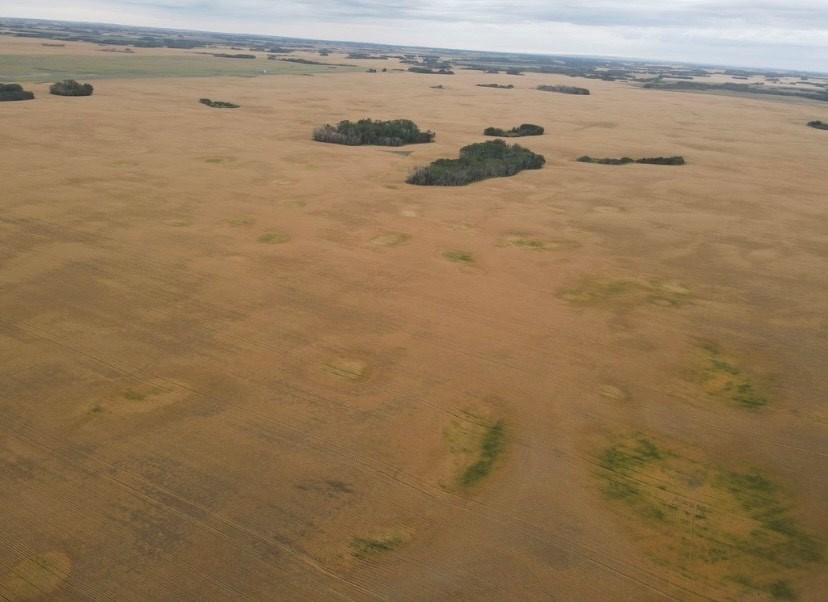UNITY — Once thought to be a subject for science fiction only, drone technology is claimed to have been initiated as far back as a hundred years ago or more. A drone is an unmanned aerial vehicle with no on-board crew or passengers and was originally built for military purposes. Drones today have found a wide range of applications for civil use and have migrated into the agriculture sector.
Brayden Schultz, who farms 5,000 acres with his parents Vern and Jessica Schultz, tells the Press-Herald / SASKTODAY.ca about their use of drones in their farming operation.
“We have utilized a single drone on our farm for the past two growing seasons.”
The aerial view provided by an agricultural drone can give information on crop growth stages and crop health, Shcultz explains.
“A drone allows the operator to fly up 500 to 600 feet in the air to get a good visualization of what a field, as a whole, looks like, ” he says.
“It can see areas where there might be diseases or insects out in the middle of the field that you wouldn’t be able to see from the field’s edge. It is also helpful for determining overall field maturity when looking to do things such as desiccation timing.”
Farmers can purchase drones specific to agricultural use which use infrared cameras to pick up high disease areas along with collecting field data that a farmer would not be able to get just by walking into a field Schultz explains.
Downsides outweighed by benefits
“We are starting to see drones that have the ability to spray with 10- to 30-litre tanks, which can be ideal for spraying such things as plots,” he says.
Specialized ag drones can range anywhere between $15,000 and $30,000, so they require a significant capital investment, however he also says purchasing a basic drone can cost anywhere from $500 to $1,500.
While Schultz says he has not completed any specific drone training, there are regulations that must be followed. A drone typically cannot fly over a city or town air space without first getting airspace access permission.
“I’ve seen where people don’t request access into that airspace and connection to the drone gets cut off.
“Obviously there are privacy regulations with drones, as they can’t be flown over someone or someone’s property without their consent either.”
Schultz adds, “Drones in general are fun to fly around and there are some neat things you can do with them, but the biggest advantage is getting to a high elevation where you can get the full scope of a field.”
While there are some drawbacks to drone use in agriculture such as short flight time and the unit being easily affected by weather, there are also multiple advantages to this high-tech farmhand.
Proponents indicate modern agricultural advances using drone technology assist the producer by improving productivity, reducing pollution, generating data that can help minimize pesticide use and potentially increasing yields and saving time coupled with relative ease of use depending on what the drone is being used for.
Proponents say one of the most significant benefits of agricultural drones is the capability to explore farm regions reliably. They may pay for themselves quickly and ultimately end up lowering the operating expenses, resulting in a return on investment.




